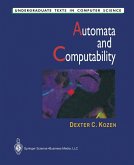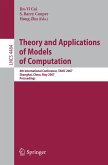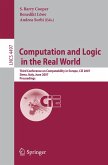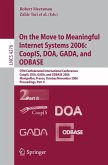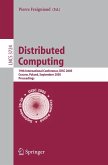Dieser Download kann aus rechtlichen Gründen nur mit Rechnungsadresse in A, B, BG, CY, CZ, D, DK, EW, E, FIN, F, GR, HR, H, IRL, I, LT, L, LR, M, NL, PL, P, R, S, SLO, SK ausgeliefert werden.
"It is interesting that a book on interactive computation is constructed as a large cooperative effort involving 31 contributors; three of them also performed the editing task. ... Each section appears to be self contained--one may read in detail a chapter of personal interest in the middle of the book without having reference other material in the book. Each chapter has an excellent self-contained collection of references. ... Summing Up: Recommended. Upper-division undergraduates through professionals." (J. Beidler, CHOICE, Vol. 44 (9), May, 2007)



